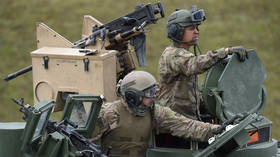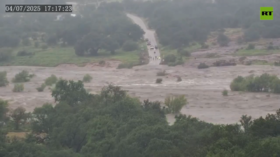The last time someone died in India-China border clashes, it was WAR
In a sudden escalation of the ongoing India-China border standoff, soldiers from both sides have been killed. Such confrontations are not uncommon, but lives have not been lost since the 1960s – when the two nations fought a war.
Multiple soldiers of the Indian Army and, reportedly, from China’s People's Liberation Army (PLA) were killed and several others injured in the ongoing border clashes in Eastern Ladakh’s Galwan Valley region, which broke out in May at several locations along the 3,500-km Line of Actual Control (LAC) – the de facto Sino-Indian boundary line. Reportedly, there were no bullets fired but the troops engaged in medieval-style stone pelting and hand-to-hand combat.
History of border clashes
While various stand-offs have occurred periodically – the last one occurred in Doklam at the India-Bhutan-China border trijunction in 2017 – such casualties at the border have not been reported for over 45 years. Most confrontations have involved hand-to-hand fighting and stone pelting between patrolling troops, later resolved through Flag meetings between senior military officers from both sides. But, this time the situation appears grim and serves as a reminder of the 1962 Sino-Indian war which was triggered by such violent clashes as the very one at Galwan Valley.
Significantly, attempts to defuse the tensions were already underway when the deaths were reported, and several rounds of talks between senior military officers had already been held. Last week, the Indian Army Chief General Naravane stated that troops of both sides were “disengaging” in a phased manner from the stand-off areas following the ground level talks and some disengagement had been completed in the Galwan river area.
What led to the violence
While the two sides are once again engaged in talks to prevent further escalation and to “cool down” temperatures, the question is why did the border confrontation turn violent – and could these trigger a broader conflict, or war?
Unlike earlier border skirmishes involving patrolling platoons, this time the Chinese seem to have made a planned incursion along multiple locations in the LAC, apparently aimed at physical occupation of areas claimed by India. This is evidenced by the fact that the Chinese were quick to amass battalion-sized forces with heavy weapons in areas that previously lacked a Chinese presence. This is believed to be in response to India developing border infrastructure, including roads and bunkers along the LAC. The Chinese believe such developments could provide India crucial strategic advantages, including high level of border patrolling and the Chinese military now appears to have occupied some 40–60 square kilometers of territory claimed by India in these areas, including the Pangong Tso and the Galwan Valley.
Another reason for China’s more assertive behavior, seen not just along the Sino-Indian border but also in the South China Sea and Hong Kong, could be due to the general increase in “China bashing” in the aftermath of the Covid-19 pandemic. With India’s clout in the World Health Organization (WHO) increasing, and an international investigation looming into China’s alleged irresponsible handling of the pandemic, China could be feeling the need to put pressure on India.
A more overarching, key driver for this confrontation is the changing power balance between China and India, particularly the expansion of Chinese maritime power in the Indian Ocean, which could potentially dilute or neutralize India’s geostrategic advantage there. One way India has to counter this is through initiatives like the Quad arrangement it has with the US, Australia and Japan – it has recently upgraded its ties with Australia to a comprehensive strategic partnership and signed a logistics agreement – like it had already done with Japan and the US.
Role of global powers
The border situation is being closely watched by other global powers. In May, President Trump extended his support to New Delhi to negotiate with China, stating he was “ready, willing and able to mediate” between the two Asian neighbors, an offer that was rejected by New Delhi. In any case, such an attempt would have been futile due to the inherent mistrust in US-China ties. The United States has also been engaged in stitching together an anti-China coalition by expanding the G7 forum to include Russia, India, South Korea and Australia.
Russia, which has close strategic relations with both China and India, has maintained a neutral position, which seems to have helped in keeping matters under control and also sent a subtle political message to Beijing. Japan and Australia have openly sided with India. On the overall balance, international support for India puts China in a disadvantageous position and could result in the ongoing standoff being brought under control after dragging on for some time – as seen in earlier escalations.
The next few days are crucial. A political breakthrough in this long-pending dispute is unlikely but successful talks could set the tone for future engagements. Finally, the timing of the forthcoming Russia-India-China trilateral dialogue, expected to take place virtually on 22 June, will ensure that both India and China cool matters down.
The statements, views and opinions expressed in this column are solely those of the author and do not necessarily represent those of RT.















